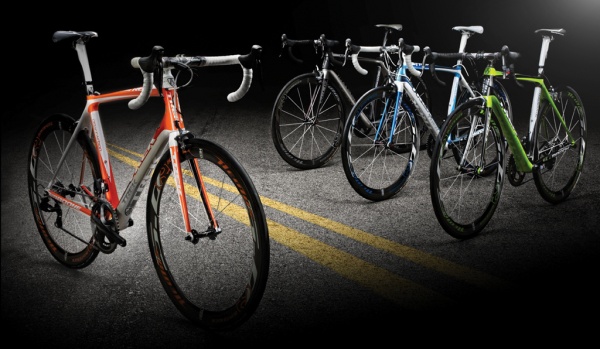Madone 6 Series is race-bike royalty, with its legacy of Pro Peloton performance. Still the same incredible ride feel and hand-built quality, now with an all-new super-aero shape.6 Series has charged the steepest climbs, staged the biggest comebacks, carried the greatest legends. It will take you past your limits, beyond your expectations.
Highlights :
- Hand built in USA
The world’s best carbon craftsmen meticulously hand build each frame from our proprietary OCLV Carbon in our US manufacturing facility.
- Choose your fit
Choose either H1 or H2 Fit to get the perfect position on the bike, and customize the spec with Project One.
- New, super-aero frame
Trek’s revolutionary KVF tube shape and tip-to-tail integration, including integrated front and rear brakes, make Madone an aerodynamic game changer.
- Pro Tour-tested tech
Net Molding, StepJoint, BB90, E2, internal cable routing, Ride Tuned seatmast, DuoTrap. This bike is loaded with performance enhancements.
Ride and handling :
Madone 6 Neither overly twitchy nor somnabulantly boring, the pitch-perfect geometry – 73-degree head tube angle, 976mm wheelbase, and 72mm bottom bracket drop on our 52cm sample – carves a wicked arc through sinuous high-speed descents, confidently switches lines mid-corner, and still nails the proverbial ‘peel a banana at speed’ test. Save for especially fit riders with above average power outputs, we doubt most people will notice a difference. Ride comfort has improved too, albeit marginally.
Frame:
Madone 6, Virtually everything is carbon fiber, too, including the bearing seats for the integrated headset and bottom brackets and the rear dropouts. Removable ports at the rear brake and under the bottom bracket shell ease maintenance some but the lack of internal guides still makes servicing tricky if you don’t have the forethought to run liners through the frame before yanking out the old cables. Internal routing and the chain stay-mounted rear brake make for a clean-looking package. Unfortunately, we took issue with some of the routing’s entry and exit ports, too. The entry ports for the derailleurs and rear brake are too far forward, meaning that riders with smaller frames (or ones using shorter and/or lower stems) will have to run bigger loops of housing to prevent binding. Trek recommends running derailleur lines around the head tube and crossing them back over inside the down tube but we had better luck both visually and functionally by straightlining everything front-to-back. Likewise, the rear brake path is less than optimal.
Equipment:
Our wonderfully light, 6.54kg (14.42lb, without pedals) custom-built test bike was an early media sample sent before Shimano had adequate stock of the new Dura-Ace 9000 group. Bontrager also includes its latest Aeolus 3 D3 carbon clincher wheels wrapped in aero-profile R3 tires. The ultra-reliable, DT Swiss-built star ratchet rear hub internals should last for ages, too. The flex-free mounts yield a firm lever but high-end power is lacking, exacerbated by the stock Bontrager cork pads’ so-so initial bite. None of the pad fixing screws can be readily accessed on the bike – meaning you have to readjust the cartridges every time you swap pads – and it’s virtually impossible to sight the rear brake pads on the rim while simultaneously squeezing the lever. Trek has managed to integrate aerodynamic performance into the new Madone while impressively maintaining all of the old bike’s most important characteristics: weight, stiffness, ride quality, and handling.
Image Credit © Trek




